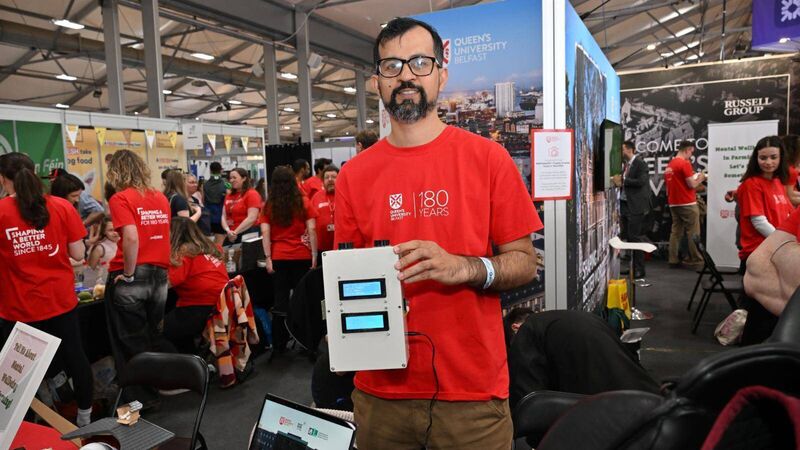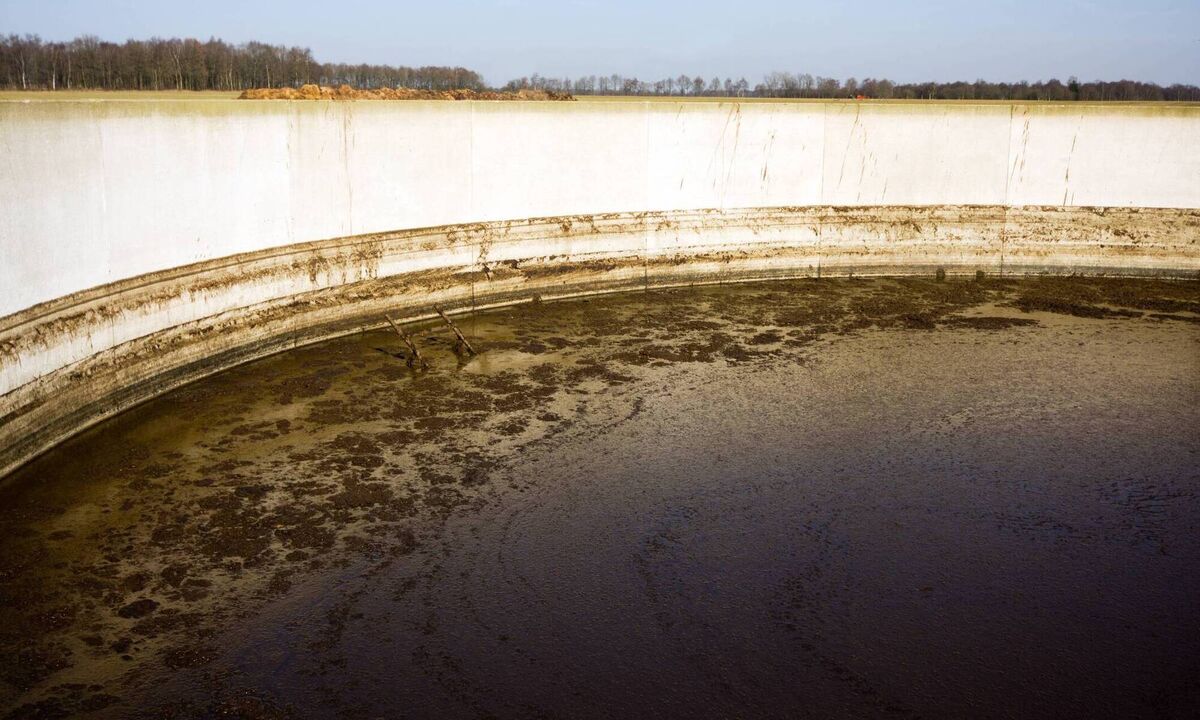New slurry gas monitor shows promise after initial testing

Dr Shakeel at the Balmoral Show where he showcased the slurry gas monitor created by a team at Queen's University Belfast.
A new slurry gas monitor is currently in the testing phase at Queen’s University Belfast. The monitor, no bigger than an iPad, is a portable device designed to keep farmers safe from harmful gases and particles.
Devised by electrical engineers at Queen’s, led by Dr Hamza Shakeel, with input from the university’s School of Biological Sciences, the monitor has so far been a success in testing.
The monitor, which took nearly six years to formulate and was originally designed to monitor pollution levels, is rather nondescript with its simple LCD display and grey shell. This current prototype features eight separate sensors that can be removed or included depending on a user's needs.
The monitor contains sensors for hydrogen sulphide (HS), humidity, temperature, carbon dioxide (CO), carbon monoxide (CO), methane (CH), particles, and volatile organic compounds.
The hydrogen sulphide monitor is the main sensor within the device, as the gas carries the highest risk for farmers. The nature of the gas, being heavier than oxygen, can displace oxygen in your lungs, which can cause asphyxiation and, in serious cases, death.
The LCD or digital screen display is a simple interface that shows live readings of gases detected in the vicinity.

Teagasc advises that farmers or farm workers must not enter the shed until at least 30 minutes after agitation has finished. According to Dr Shakeel’s research with their new monitor, a person should not enter a shed 40-45 minutes post-agitation before hydrogen sulphide lowers to suitable non-dangerous levels.
It is important to note that current gas detection systems on the market are not advised by the Health and Safety Authority (HSA) or Teagasc.
These commercially available meters are typically set to alarm at 10ppm, which is the Occupational Exposure Limit Value (OELV) for a 15-minute exposure under the Code of Practice for the Safety, Health and Welfare (Chemical Agents) Regulations, not suitable for farming conditions.
Dr Shakeel’s team have recently concluded the first round of in-field tests for the device. Using it like a ‘black box’, the monitor was set low to the ground and plugged into a regular socket, collecting data which would then be later reviewed by Dr Shakeel’s team.
The farmer was asked to note down days and times when slurry agitation occurred, and this was not given to the team until after the data was collected and examined.
“We were able to pinpoint the day and time that slurry agitation began during our blind experiment and go back to the farmer to corroborate our results,” Dr Shakeel explained.
Other sensors triggered during agitation were the CO sensor, which had a delayed reading compared to the hydrogen sulphide sensor. It was determined that the monitor was picking up on the exhaust of the tractor being used to agitate. Volatile organic compounds are also released at dangerous levels during agitation.
An anomaly in the data that occurred during their five-day test were spikes in the dust particle readings at 7am and 6pm or 6.30pm.
“We were surprised, because our main application was to monitor gases. So again, we went back to the farmer and asked them, ‘What was the activity that was conducted during this time?’.
"We were able to give the exact time, and they told us that they cleaned the bedding in their shed at these times. This also gave us the confidence regarding monitoring air quality with our device,” Dr Shakeel said.
This feature can help safeguard farmers, their staff and animals by minimising the risk of respiratory issues caused by repeated and prolonged exposure to dust particles.
Dr Shakeel and his team were able to determine that it took 20 minutes for dust particles to settle to safe levels, with the team advising that the best practice is to wait 30-35 minutes before letting people or animals back into the shed.
With multiple sensors and applications, Dr Shakeel’s team hope that once commercially available, customers would be able to "pick and choose" which sensors they wanted in their device.
This would make it more economically viable, and the customisation would allow it to cater for multiple sectors like farming, building sites, pharmaceuticals, or labs.
Although not at the business plan and pricing stage, Dr Shakeel explained that a starting price of £1,500 (€1,736.36) could be expected.

However, with customisations for different applications, prices could fall below or above the starting price.
With initial testing being a success, further testing of the monitor is scheduled for the future.
Dr Shakeel and his team hope to adapt the monitor for use indoors and outdoors, as well as looking into its application for methane and ammonia monitoring, looking towards the broiler sector for further research and testing.












